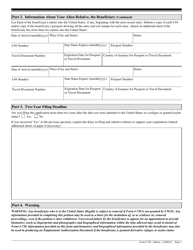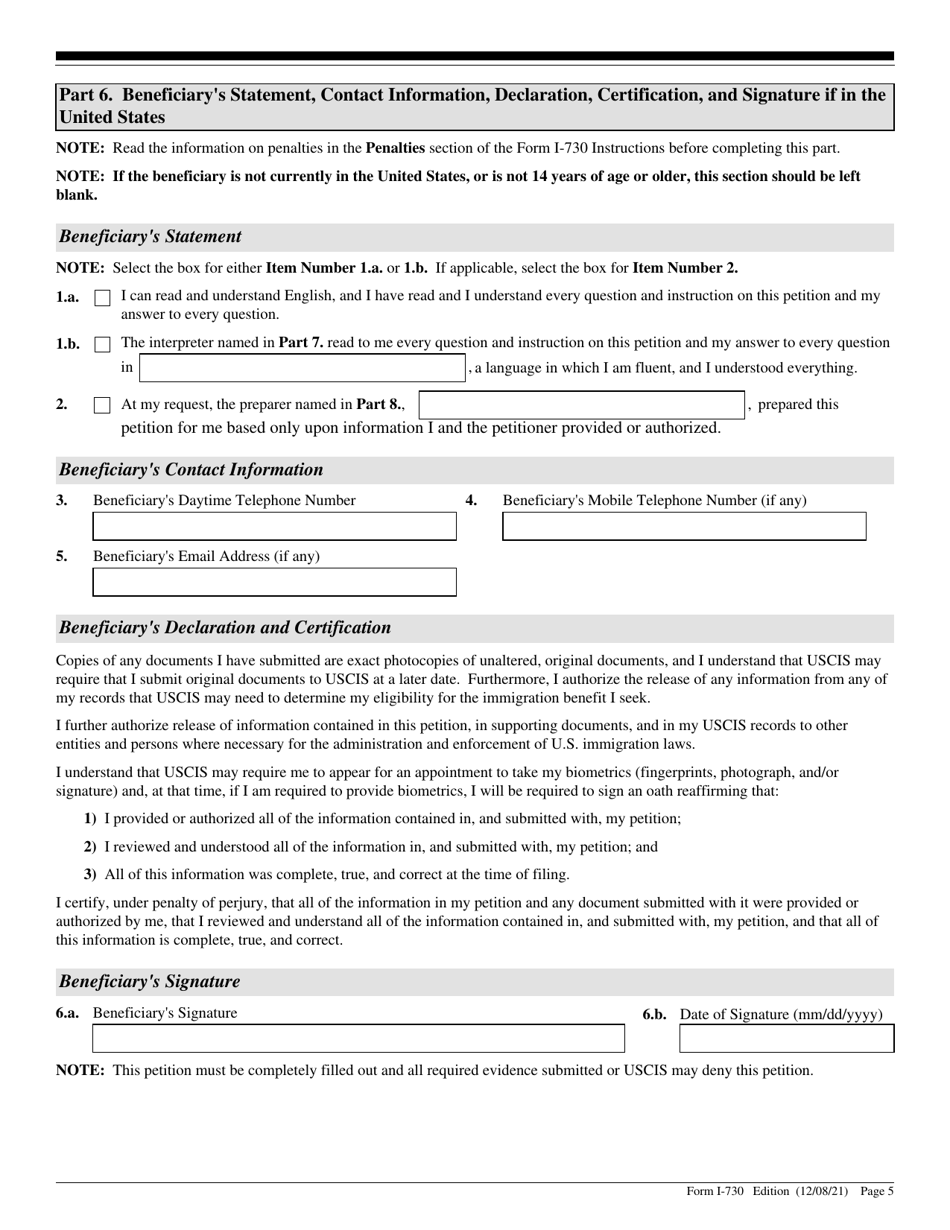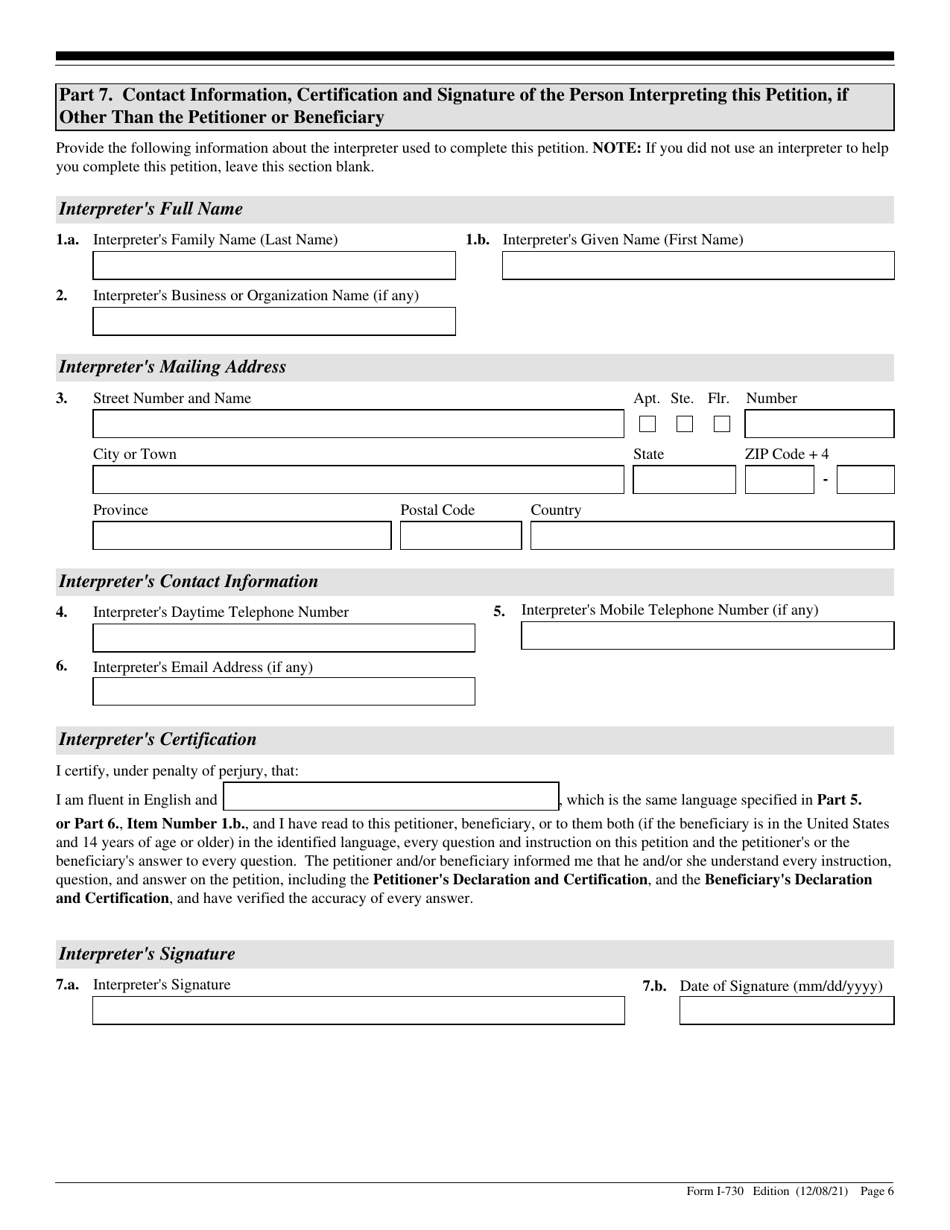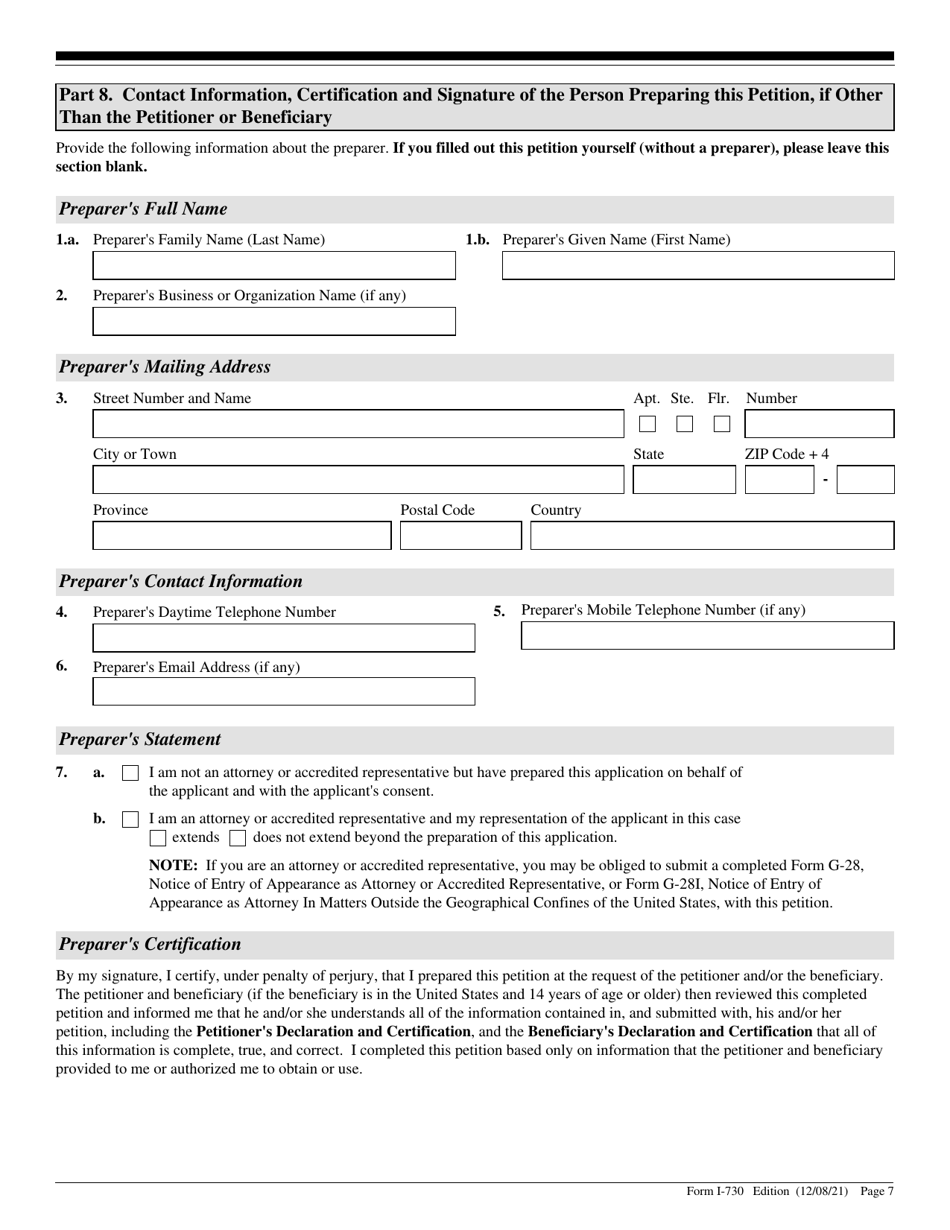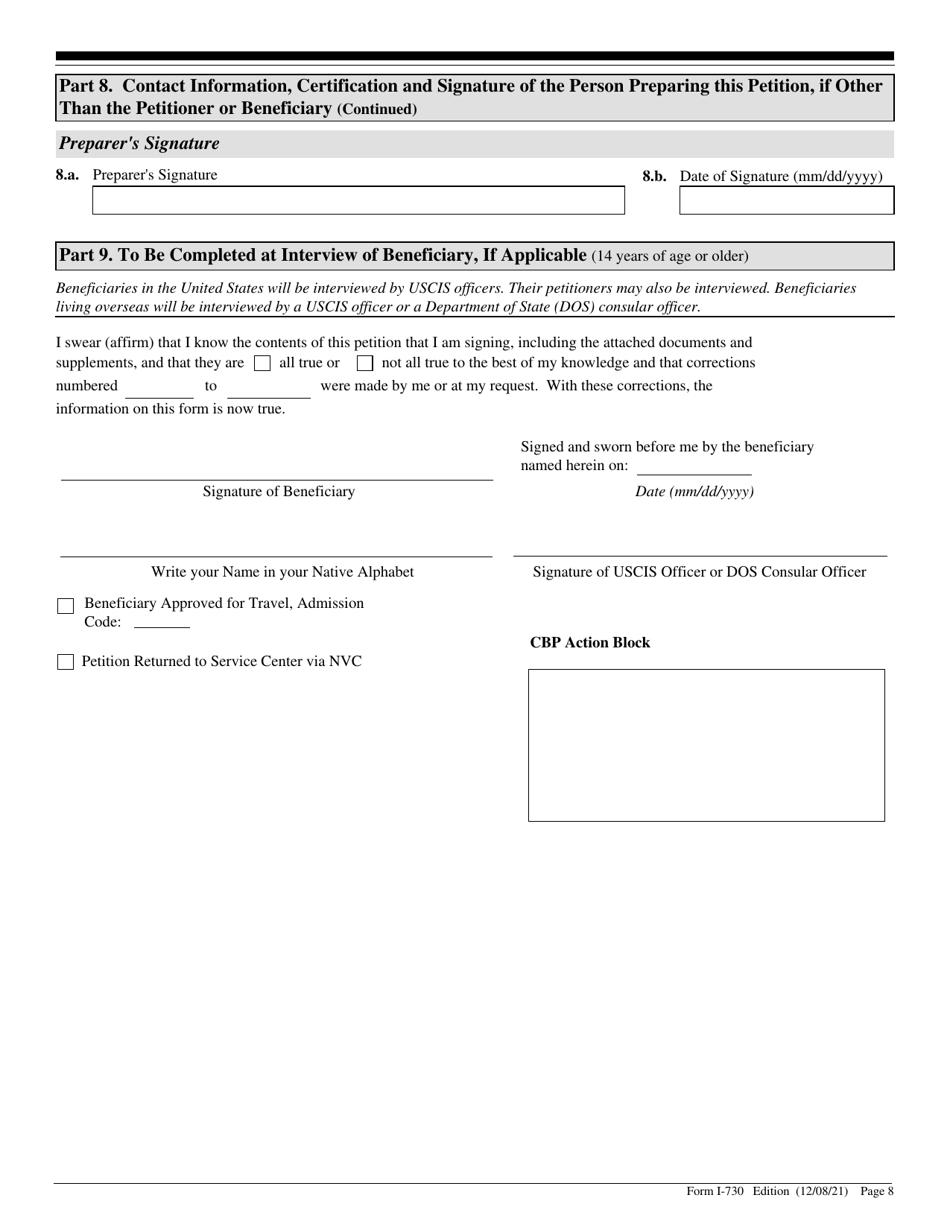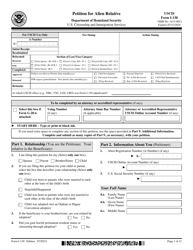This version of the form is not currently in use and is provided for reference only. Download this version of
USCIS Form I-730
for the current year.
USCIS Form I-730 Refugee / Asylee Relative Petition
What Is USCIS Form I-730?
This is a legal form that was released by the U.S. Department of Homeland Security - Citizenship and Immigration Services on December 8, 2021 and used country-wide. Check the official instructions before completing and submitting the form.
FAQ
Q: What is USCIS Form I-730?
A: USCIS Form I-730 is a Refugee/Asylee Relative Petition.
Q: Who can file USCIS Form I-730?
A: Refugees and asylees who have been granted asylum in the United States can file USCIS Form I-730 to petition for their qualified family members to join them.
Q: What is the purpose of USCIS Form I-730?
A: The purpose of USCIS Form I-730 is to reunite refugee or asylee individuals with their qualifying family members.
Q: What are the eligibility requirements for filing USCIS Form I-730?
A: To be eligible, the qualifying family member must have a qualifying relationship with the refugee or asylee, and the refugee or asylee petitioner must be residing in the United States.
Q: What documents are required to file USCIS Form I-730?
A: The required documents include evidence of the qualifying relationship, evidence of refugee or asylee status, and supporting documents to establish eligibility.
Q: What happens after USCIS Form I-730 is filed?
A: Once USCIS receives Form I-730, it will be processed, and if approved, the qualifying family member may be able to join the refugee or asylee in the United States.
Q: Can a person appeal if USCIS denies their Form I-730?
A: Yes, if USCIS denies Form I-730, the petitioner has the right to appeal the decision.
Form Details:
- Released on December 8, 2021;
- The latest available edition released by the U.S. Department of Homeland Security - Citizenship and Immigration Services;
- Easy to use and ready to print;
- Yours to fill out and keep for your records;
- Compatible with most PDF-viewing applications;
- Fill out the form in our online filing application.
Download a fillable version of USCIS Form I-730 by clicking the link below or browse more documents and templates provided by the U.S. Department of Homeland Security - Citizenship and Immigration Services.




